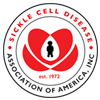Trusted Resources: Evidence & Education
Scientific literature and patient education texts
Increased acute care utilization in a prospective cohort of adults with sickle cell disease
source: Blood advances
year: 2018
authors: Lanzkron S, Little J, Field J, Shows JR, Wang H, Seufert R, Brooks J, Varadhan R, Haywood C Jr, Saheed M, Huang CY, Griffin B, Frymark S, Piehet A, Robertson D, Proudford M, Kincaid A, Green C, Burgess L, Wallace M, Segal J
summary/abstract:The ESCAPED (Examining Sickle Cell Acute Pain in the Emergency vs Day Hospital) trial is an ongoing prospective study comparing outcomes of people with sickle cell disease (SCD) seeking care for acute pain management in either an emergency department or specialty infusion clinic. The objective of this paper is to describe the baseline characteristics and health care utilization of patients in the trial. This is a multicenter study across 4 US cities that enrolled all adults with SCD living within 60 miles (96.6 km) of a study site who were expected to have acute care utilization over the study period. Twenty-one percent of participants had no acute care visits in the first 12 months of follow-up. Using negative binomial regression, we describe subject characteristics that predict acute care utilization.
Three hundred ninety-one subjects have completed 12 months of follow-up with a mean age of 34.5 years (standard deviation, 11.4), 60% are female. Fifty-four percent of subjects with hemoglobin SS disease and 46% with hemoglobin SC disease had 3 or more acute visits over the study period. The prevalence of chronic pain in this cohort was 68%. Predictors of higher rates of acute care utilization included being unemployed, having chronic pain, being on chronic transfusion therapy, having a history of stroke, and being on disability or on Medicaid. This is the first prospective cohort in the modern era, and it demonstrates much higher rates of acute care utilization than reported in the Cooperative Study of Sickle Cell Disease.
organization: Johns Hopkins School of Medicine, USA; Case Western Reserve University, USA; Medical College of Wisconsin, USA; Our Lady of the Lake, USA; University of California, USA; Centene Corporation/Louisiana Healthcare Connections, USADOI: 10.1182/bloodadvances.2018018382
read more full text
Related Content
-
Barriers and Facilitators to Care for Individuals With Sickle Cell Disease in Central North Carolina: The Emergency ...Background: Sickle cell disease (SCD) i...
-
The clinical presentation, utilization, and outcome of individuals with sickle cell anaemia presenting to urban emer...Background: Sickle cell anaemia (SCA) i...
-
Finding the right sickle cell disease care teamChandra Wallace does not remember a time...
-
Vitamin D Supplements May Reduce Pain-related Emergency Room Visits in Children With SCDTaking vitamin D supplements may lower t...
-
Safety and early hints of benefit seen in phase 1b trial of PF-04447943Sickle cell disease (SCD) patients were ...
-
New Guidelines for Managing Sickle Cell Disease Presented at ACP Internal Medicine MeetingNew guidelines for therapeutic strategie...
-
CTX001 Continues to Show Promise in Severe SCDA single dose of CTX001, an experimental...
To improve your experience on this site, we use cookies. This includes cookies essential for the basic functioning of our website, cookies for analytics purposes, and cookies enabling us to personalize site content. By clicking on 'Accept' or any content on this site, you agree that cookies can be placed. You may adjust your browser's cookie settings to suit your preferences. More Information
The cookie settings on this website are set to "allow cookies" to give you the best browsing experience possible. If you continue to use this website without changing your cookie settings or you click "Accept" below then you are consenting to this.




 +myBinder
+myBinder
